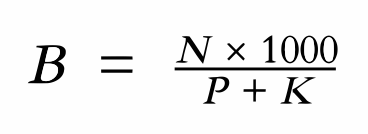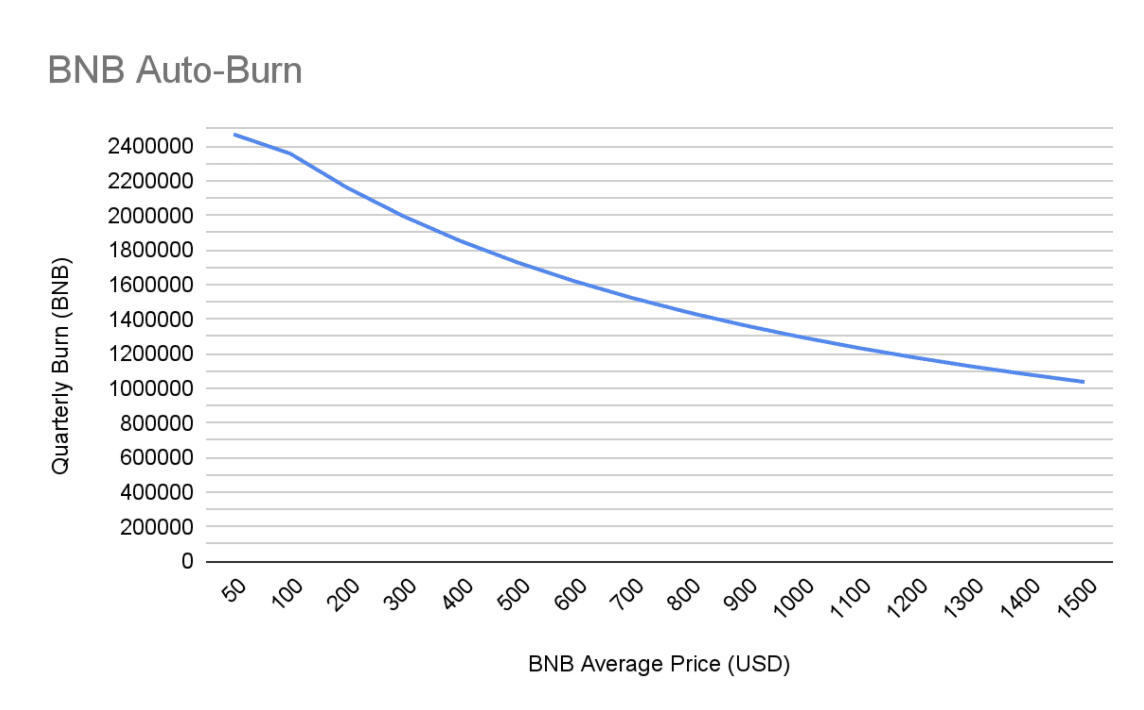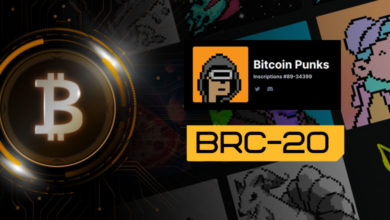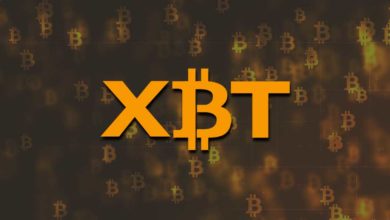What is BNB Burn? Binance coin burning explained – Quarterly Auto burn
Ever heard the term burn; “Coin burn” or “Token burn”. If you are following Binance or CZ – The founder of Binance on Twitter then you probably might have heard about the term “BNB burn”. Binance burns another $500M worth of BNB. Binance completes 19th quarterly #BNB burn where $795M USD has been burned and so on.
Recently Binance completed the The 20th BNB auto-burn which took place on July 13 at 13:06 BST. That event burned or in other terms destroyed 1,959,595.29 BNB which at that time was worth $444,632,106. Binance confirmed this latest burn on Twitter and in their official blog post, sharing the full transaction details. As of August 2022, there have been 20 BNB burn events. In total, 38,683,447.66 BNB coins were burned worth $4,205,580,236. This reduced the initial 200M supply by 19.34%. The total supply is now at 161,337,261 BNB.
Binance periodic BNB burn event occurs every quarterly and more than 100s of millions of dollars in BNB is getting destroyed during every burn event. The action of burning tokens are supposedly deflationary mechanism to reduce the total supply of coins / tokens and bring a store of value appeal to the currency.
The quarterly BNB burn event is an automatic mechanism that is designed to bring down the total supply of BNB to 100 million. Previously, BNB tokens were burned manually during every quarter. Now BNB uses an auto-burn feature to bring down its total supply to 100 million BNB. The auto-burn system automatically adjusts the amount of BNB to be burned based on BNB price and the number of blocks generated on the Binance Smart Chain (BSC) during that quarter.
The goal of Binance is to burn 100 million of their native tokens BNB. Since BNB and Binance launched in 2017, Binance has committed to destroy half of its max supply. Through quarterly burn; the program which begun in late 2017. Binance has so far burned removed around 38.7 Million BNB tokens out of circulation through the process called burning.
Alright! So what does burn mean? What is BNB auto burn and how it works? Here we’ll look everything in detail.
Here you’ll learn about BNB and its role in blockchain ecosystem. About coin burn. How is BNB burned? What happens when BNB burn? About real time burning mechanism and quarterly auto burn. How is BNB coin’s circulating supply being significantly reduced through BEP-95. Formula that computes the total amount of BNB to be burned. Anticipated quarterly BNB auto burn amount. When was the first BNB Burn? When is the next BNB burn? BNB auto-burn history. BNB burn schedule, date, time. Details of BNB burn and lastly about the BNB pioneer program.
Binance
Binance as you all know is a massively popular cryptocurrency exchange in the world. Currently Binance remains the largest cryptocurrency exchange by trading volume.
Not only exchange but Binance also hosts two blockchains, both powered by BNB – The native coin of Binance.
BNB Chain consist of two blockchains, namely BNB Beacon chain (previously called as Binance Chain) and Binance Smart Chain or BNB Smart Chain (BSC).
BNB Beacon Chain or Binance Chain handles BNB on-chain governance functions such as staking and voting.
BNB Smart Chain (BSC) blockchain is similar to Ethereum. It uses the Ethereum Virtual Machine and it supports smart contracts. It is also fully compatible with Ethereum’s tools and DApps (Decentralized Apps).
Learn how to connect your Metamask wallet to Binance Smart Chain.
What is BNB? Binance Coin
Binance Coin (BNB) is the native cryptocurrency of the Binance ecosystem. Launched in 2017, BNB was originated as an ERC20 token on the Ethereum blockchain with a total supply of 200,000,000 BNB. It was issued by Binance through an initial coin offering in 2017. Later in 2019, after the launch of Binance chain through mainnet swap all the BNB tokens have been migrated to the BNB chain.
Now BNB – The Binance coin is the native coin of the BNB chain and is an essential part of the Binance ecosystem. It powers the BSC ecosystem and the applications that built on the BNB chain. It fuels on-chain transaction fees on Binance chain similar to gas on Ethereum. And it also used in the operation of the Binance and Binance.US exchanges.
With BNB on Binance when you use our referral link you can start saving on trading fees. You’ll save up to 25% on spot trading fees, save up to 25% on margin trading fees and save 10% on futures trading fees.
Over the past few years BNB has gained a lot of traction and is now one of the most valuable and highly traded cryptocurrency. Commonly used by many different exchanges and accepted as a form of payment by many businesses. Not only you can trade BNB but is also one of the popular utility token. You can use BNB to settle transaction fees on Binance chain, use in decentralized on-chain governance of BSC, use to pay for goods and services and is also used in wide range of applications.
Even though BNB looks like it is centralized crypto; Binance does not control or operate BSC nor BNB. It is operated and supported by a community of users, developers, validators, and delegators.
BNB is deflationary
$BNB is currently ranked at number #5 and it sits behind Bitcoin (BTC), Ethereum (ETH), Tether ($USDT) and USD coin ($USDC) with a total market cap of $42 billion.
$BNB is not an inflationary cryptocurrency. Among the top 10 cryptocurrency by market cap BNB is the only coin that is deflationary. Unlike BTC or ETH there are no PoW mining rewards or staking rewards. The only reward for validators on the BNB chain is the gas fees (transaction fee) that they receive from each block.
$BNB is deflationary and the community aims to bring down the total circulating supply by half. When launched the initial maximum supply was fixed at 200,000,000 BNB coins, of which only 161,337,261 BNB exists in circulation as of July 2022. 38,683,447 BNB has been burned so far since the start of the 1st burn event on October 18, 2017.
Okay, But what is a coin or token burn and why burn crypto? Does burning crypto affect its price? Burning tokens generally mean reduction in supply and it eventually affects the price especially when there is demand. Since supply is decreased the value of holders token is expected to increase but the burn will not have any immediate effects on the price. However it’ll positively influence the assets value in the long run.
Let’s understand coin and token burn.
What is a coin burn or token burn?
Coin burn is a process of permanently removing coins out of the circulation, creating a deflationary effect. When a certain amount of coins or tokens are said to be burnt, those batch of coins or tokens will be permanently pulled out of circulation essentially destroying the cryptocurrency. This reduces the total supply permanently and increase the value of the remaining coins that are in circulation.
This is done by simply transferring those coins or tokens to a burn address. Burn or eater address can only receive funds and not send them. Its also called as dead address which does not have any private key associated, so the crypto send to that address is lost forever. Nobody even the developers can ever access the private keys of the burn address. Since the private keys of the burn address are unknown the coins that are sent to that address can never be spent again or recovered.
Okay, but why would anyone want to destroy crypto?
Why do Binance burns coin?
Why would developers burn their cryptocurrency? Not only Binance but many cryptocurrency projects perform coin burns to create a deflationary effect.
One of the positive effects of token burns in the ecosystem is that it increases token scarcity. When there is excessive crypto flow in the market the price remains low as demand never exceeds the supply. In such case burning portion of crypto creates a deflationary effect.
In general burning is done to maintain a supply-demand balance. Burning decreases the total supply forever. Lowering supply results in increased scarcity and higher demand thus increasing the value of remaining tokens in circulation. Scarcity of token naturally triggers price appreciation to the remaining tokens.
Some of the common reason to conduct coin or token burn includes: 1. To control a cryptocurrencies high inflation rate. 2. Burn to destroy unwanted tokens from the system. and 3. To reduce circulating supply and increase the value of remaining coins.
How coin burning is done?
There are multiple ways to burn a cryptocurrency. There are burn address which one can send their coins to destroy. And there are also projects which has implemented specific burning feature at the protocol level. For example to burn BNB Binance has implemented smart contract burning function right when it was first launched.
Anyone can burn their coins. A person who wants to burn their coins will call for the burn function. The smart contract verifies the coins in their wallet and it gets subtracted from that wallet. After burning is done the total holdings in their wallet will then be updated.
When you execute a burn function to burn your coins the specific set of coins are permanently burned and will be destroyed forever. You need to note that it is impossible to recover coins that are burned. The burn transactions are irreversible. Thanks to blockchain technology. Burning mechanism is completely transparent and the proof of burn is verifiable by anyone as they are permanently recorded on the blockchain using the block explorer.
Coin burns: Two categories
Coin and Token burns can be segregated into two main categories.
1. Protocol Level Burn Mechanisms: Burning is carried out based on Proof of Burn (PoB) consensus mechanism. Proof of Burn (PoB) mechanism uses periodic burns. Binance blockchain periodically burns its native tokens to enhance their value. It is often conducted on quarterly basis and Binance is committed to burning BNB every quarterly until the maximum possible supply reaches 100 million BNB. Periodic burning events are achieved using the burn function and they are automatic – A smart contract that sends specific number of coins automatically to the burn address to remove them permanently from the supply.
2. Dividend Burns for Economic Stability: Crypto burning mainly serves one purpose; to increase the value of each remaining token. This mechanism simply rewards existing token holders. Blockchain like Binance uses buy back and burn strategy where they purchase some of their tokens at market price and burn them. The scheduled quarterly burns have been replaced by Auto-burn mechanism.
To know more let’s look at the BNB burning events more specifically.
What is a BNB Burn?
BNB burn is a quarterly event where Binance burns or destroys specific amount of BNB. This scheduled event will continue until Binance has burned 100,000,000 BNB which is 50% of its initial max supply.
There are two coin-burning mechanisms by which BNB is burned. 1. Quarterly Auto burn and 2. Real-Time Burn.
Previously the quarterly BNB burns are conducted only based on Binance’s profits. It reflects the revenue generated in the Binance centralized exchange and all the BNB burns are announced by Binance. In each burn event Binance buys specific amount of BNB from the open market and destroys it. The first recorded burn was conducted in October 2017 which burned 986,000 BNB.
The quarterly burn event was later replaced by BNB Auto-Burn to ensure the BNB burning process is more objective and clear to the community. Now the scheduled quarterly burns conducted by Binance is automatic and the amount of BNB to be burned is based on BNB’s on-chain activity and several factors including: BNB circulating supply, overall profitability, BNB price and the number of block produced per each quarter.
What is Auto burn? Quarterly BNB Auto-burn
The BNB burn events are scheduled to occur every quarterly I.e. January, April, July and October until 50% of the total BNB ever issued (200,000,000 BNB) are destroyed which is 100,000,000 BNB.
Binance performed periodic burns even when the BNB coin was part of the Ethereum network. It used the smart contract burn function to burn BNB. Now that BNB coin relies on the BNB chain the burn function works differently.
Anyways all the burn events are verifiable. Using Ethereum blockchain explorer, such as Etherscan you can verify all BNB Coin (ERC-20) burn transaction. Now that it is on BSC (Binance Smart Chain) you should use the BSC Scan to verify recent burn transactions. We’ll link them below.
Previously the BNB quarterly burns were based on the BNB trading volume and revenue generated from the Binance exchange. In December 2021 this was replaced by BNB Auto-Burn feature which is a protocol for quarterly BNB burning events.
BNB Auto-Burn achieves the same objective as before. It is still done quarterly and it’ll continue to follow the same quarterly burn schedule as planned until it reduces its total supply to 100,000,000 BNB. But since the process is automated it is more efficient now. Also the implementation of the BNB auto-burn offers greater transparency and predictability to the BNB community.
The BNB auto burn mechanism is automated to adjust the amount of BNB to be burned based on the price of BNB and the number of blocks generated on Binance Smart Chain (BSC) during the quarter. It is calculated on the basis of on-chain information. There is a formula for this and we’ll get to that shortly.
The second mechanism is Real time burn.
Real-Time Burn (BEP-95)
The objective is to burn 100M BNB. Since the BNB burn rate was going slower than planned; to accelerate the process Binance CEO Changpeng Zhao implemented BEP-95 in November 2021.
BEP – BNB Evolution Proposals or Binance Evolution Proposals which is similar to Bitcoin’s BIP (Bitcoin Improvement Proposal). The introduction of BEP 95 protocol update introduced Real-Time Burn mechanism into the economic model of BSC. This was designed to help burn BNB tokens faster.
In addition to the quarterly auto burn BNB additionally uses the real time burning mechanism. It is based on gas fees that involves burning a portion of BNB spent on transaction fees on the BNB chain. It includes gas fees for transactions and smart contract interactions. A fixed ratio of gas fee collected is burned in each block, with the ratio decided by the BSC validators.
To speed up the BNB burning process and to make BSC more decentralized part of gas fee is burned. A fixed ratio of gas fee collected by each block’s validators will be burned. By burning part of the gas fees collected from each block, BEP-95 Real Time Burn function provides a constant stream of BNB to be burned.
Gas fees that are collected on each block is distributed to two smart contracts namely System Rewards Contract and Validator Set Contract. The real time burning mechanism is implemented in ValidatorSet contract where the BNB / BSC validators can govern the burning ratio. They can also change the parameters of the burn ratio through governance proposal vote based on their amount of BNB staked.
To know more check BEP 95: https://github.com/bnb-chain/BEPs/blob/master/BEP95.md
Through BEP-95 burning mechanism BNB is burned in real-time. It burns portion of gas fees spend on BNB Smart Chain and this real time burn is only dependent on the BNB chain network. Since it is completely reliant on the BSC network the BEP-95 will continue to burn BNB even after the 100 million BNB burn target is achieved.
Since the BEP 95 upgrade on the BNB Smart Chain this real time burn mechanism has continued to burn BNB on a daily basis. Previously it burnt around 860 BNB daily. As of July 2022, the real time burn burns approximately 285 BNB per day, The BEP-95 real time burn progress can be tracked via BNB Burns Tracker Bot on Twitter: https://twitter.com/BurnBNB
Pioneer program
In addition to quarterly auto burn and real time burn; the BNB Pioneer Burn Program also adjusts the BNB token burn mechanics.
BNB Pioneer Burn Program was introduced to help users who lost their tokens as part of mistakes they made while trying out the Binance Smart Chain. Eligible users who lost their BNB will be reimbursed through the pioneer program. It counts users lost coins towards the official burn count and reimburses them with BNB. Eligible users have to prove that they sent BNB to dead wallets. Binance will verify it, include the coins in quarterly burn and also have their tokens refunded from the auto burn amount.
Learn more about BNB pioneer burn program here: https://www.binance.com/en/support/announcement/7bcf4da5671d44a0a5118c2277773bb4
How Quarterly Auto-Burn works?
From a technical perspective, auto-burn uses BNB smart chain’s on-chain information to calculate how much of BNB should be burned. The burn amount is also adjusted based on supply and demand dynamics. Meaning when the price of BNB is low, the burn rate increases.
The number of BNB tokens to be burned is determined based on the BNB’s average dollar denominated price, which reflects supply and demand, and the total number of blocks produced on Binance Smart Chain during that quarter. The goal is to continue the BNB auto-burn until the 100 million BNB is burned. The number of tokens to be removed from circulation each quarter is automatically calculated according to the Auto-Burn formula.
Formula to compute the total amount of BNB to be burned:

B = N x 1000 / P + K
B is the total amount of BNB to be burned.
N is the total number of blocks generated on BSC during that quarter.
P is the average price of BNB against US dollar for that quarter.
K is a constant value as a price anchor which is initially set at 1000.
- BSC’s average block time is about 3 seconds. 60 seconds / 3 = 20 and 20 x 60 minutes = 1200. So the number of blocks produced in a hour would be approximately 1200. Since a calendar quarter has three 30 day months the value of N should be approximately 1200 x 24 hours = 28800 x 30 days = 864000 x 3 months = 2,592,000.
- P is the median value that is calculated using oracle price provider such as Chain Link on BSC.
- The value of K changes according to BSC BEP (Binance Evolution Proposals) proposal and community vote.
This formula ensures there will never be an excessive or insufficient burn. Also this Auto-Burn mechanism will be halted automatically when the total circulation of BNB drops below 100 million.
BNB burn FAQs
How many BNB will be burned?
The motive is to continue the scheduled quarterly BNB auto-burn until the 100 million BNB is burned. That is when the circulating supply drops to 100M BNB.
How many BNB coins have been burned?
As of July 2022 total 37 Million BNB has been burned. At current price it is equivalent to $9,534,707,657.49. In addition there is also real time burn which burns BNB on daily basis.
To check BNB auto-burn history. To track the data and numbers for BNB burn in real time use https://www.bnbburn.info/ site. This website keeps record of all previous burns including the transaction details of each burn. It also shows BNB circulating supply chart, real time burn history and auto burn schedule.
Related: What is ETH supply?
Expected quarterly BNB burn?
The below chart shows the expected quarterly BNB auto-Burn amount for different average prices:

When was the first BNB Burn? When was the last burn and when is the next BNB burn?
The first recorded burn was conducted in October 2017 which burned 986,000 BNB.
The previous BNB Burn took place on April 19, 2022. This event destroyed 1,830,382 BNB, or $772,363,806, via auto-burn.
The latest burn was 20th burn which occurred on July 13, 2022 that burned 1,955,413.52 BNB.
When Is The Next BNB Burn? There is no specific date yet for the 21st burn, but it is expected to take place at the end of Q3 2022, that is in October 2022. It should happen by mid-October. We cannot speculate on the amount of BNB that will be destroyed on next burn as it depends on the transactions on BNB chain. The auto burn algorithm adjusts it accordingly.
For updates on next burn and for confirmation on the burn details follow Binance and Binance CEO CZ on Twitter.




